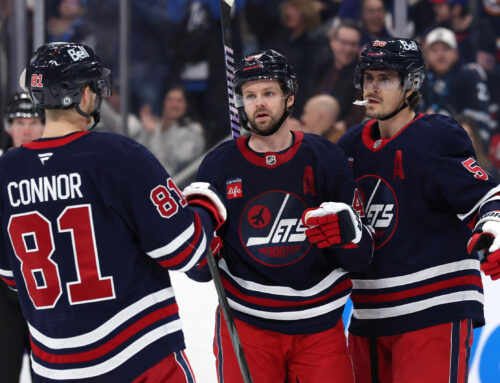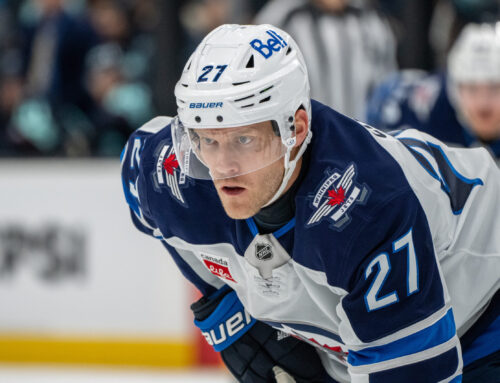
Throughout the regular season the weekly Wild West column attempted to provide some player options of for your week ahead. About halfway through the season we did a check in to see how accurate those predictions were. I presented it for a couple of reasons:
1. My recommendations are only any good if they actually help out your team and I appreciated other writers holding themselves accountable for the recommendations.
2. If my recommendations aren’t providing value, I would like to be able to reassess and figure out a way to improve them. To that end I am going to provide a season recap and see how I did overall and if there are any lessons to be learned in the future.
Let’s start off with a little recap from that mid-season article:
When I recommend a streamer I am usually looking at a low owned (typically 20% or less in Yahoo) player who I think has a shot at giving you more production than the last man on your roster for the week. The theory being if you are able to swap a player or two out every week to take advantage of schedules, hot streaks, line combinations etc. you might be able to get more production out of that roster spot than keeping one player there all year. To that end you will often see the players recommended here have more scheduled games, or an off-day schedule to allow for more games played during the week. Again, the idea being that the lower ranked player (who may conceivably have fewer points per game) that can start more games will provide more production over a week than your player who has fewer games.
So how do we assess this? Well I am hoping that my picks will outperform the lowest player on your roster. If we assume a traditional Yahoo set up (12 teams, 16 players) I know about how many players will be rostered at any time. My goal then is to give a player who will get more points than those bottom 10-20 players. For ease of calculation and comparison I used Yahoo’s standard point valuations (six points for a goal, four for an assist etc.). I was able to calculate that the average player in the range we are talking about would generate 4.95 points per game, or 14.86 total over a traditional three game week on average. That is the target then. In order for a recommendation to be counted a success each pick needed to generate more than 14.86 points during the week.
Over the course of the season I made 34 recommendations for streamers. During most of the the season I picked two players to highlight every week (there were several weeks I changed the format of the article so did not make any recommendations in the usual way). Of those 34 streamers, 24 exceeded the threshold outlined above for a success rate of 71%.
To be slightly more specific: on a weekly basis the expected number of points for someone in that slot was 14.86 (as above), my streamer picks averaged 21.58 a week. In addition, the per game value of the streamers was also higher, averaging 5.47 points per game vs the 4.95 point per game average from above. In general it appears (at least for 2018-19) following my picks could have provided value to your fantasy team (assuming your value structure is similar-ish to the format outlined above).
Still as generally positive as those numbers seem, what are the lessons to be learned? If we take a look at the list of picks that fell short, a couple themes emerge pretty quickly.
- Injuries: Three of the ten (Artem Anisimov, Mikael Backlund, Ondrej Kase) got hurt right after the article was posted. Anisimov in particular did not get a single game. I haven’t been able to come up with a way to predict which players are going to get injured on any given week so I have to chalk this one down to luck of the draw and a variable I won’t ever be able to eliminate.
- Few games played: Two of the players (in addition to the injured players) played two or fewer games. They were recommended because of weird schedule weeks in the West so were supposed to provide just a game or two of value. They would have been more valuable than having no one playing (so small win maybe?) but did not perform up to average. When we are talking about a sample size of two games though it is essentially impossible to predict what is going to happen so I’m not sure I can really eliminate this factor either.
- Superstar Deployment: Three of the remaining players were recommended when word came that they were going to be seeing top line deployment with superstars (i.e. Connor McDavid). In these three cases sometimes that deployment didn’t pan out, but sometimes it did and still the results weren’t great. Overall this strategy is a bit of a mixed bag. Six similarly no name/low expectations players were recommended when they were about to get the superstar treatment – it panned out for three, and did not for three.
One other point to make for this strategy. Of the 24 successful weekly picks, 13 of them went on to have full seasons where they outperformed expert projections. The biggest seasons on that list coming from Zach Parise, David Perron, Alex Tuch and Dylan Strome. I guess the moral of this story is that the streamers provide not only the opportunity to improve your weekly outputs, but also to snag a season over-performer as well.
On the above list, I did want to briefly touch on Parise. I have mentioned the other guys numerous times throughout the season, but have not really given Parise his due.
Since 2013-14 Parise’s games played, points, point pace, shot count, ice time, power play time, % of power play time, total time on ice, IPP, and Corsi For %, have all been cratering. Some of those are obviously impacted by each other (low shot totals for a season are completely related to the number of games played) but the picture painted coming into 2018-19 was pretty dreadful. Everything seemed to be tanking and good money was on low expectations. And what happened? After essentially four straight years of decline across the board each and every category saw a jump, and in some cases a large one. 2018-19 looked a lot more like his most productive recent career stretch (2011-2014), than the declining hockey he played from 2014-2017). His 61 points in 74 games in his highest point total and point pace in four years. Anyone who jumped on him at the beginning of the year certainly got some value from him.
A lot of his improvement really seems to come down to time. He played more games, saw more time on ice, and more power play time. None of his percentage numbers (personal shooting, team shooting, IPP) are that far off his career numbers, though they are in most cases an improvement from his recent years. It seems to come down to whether or not we think an age 35 season from Parise is a continued revitalization or a continued decline. Based on the above information I think it comes down to deployment. If he can keep up the time on ice and keep from getting injured it looks like there is a chance he can maintain some production. Those are pretty big questions though as much of that is out of his control (age, coaching decisions). Overall he might be a bit of a risky draft, but if it is looking like the deployment is there I would certainly be interested in seeing what another year brings.
Thanks for reading.





 FLA
FLA CHI
CHI NYR
NYR PIT
PIT L.A
L.A COL
COL MTL
MTL N.J
N.J CBJ
CBJ BOS
BOS DET
DET ANA
ANA TOR
TOR
